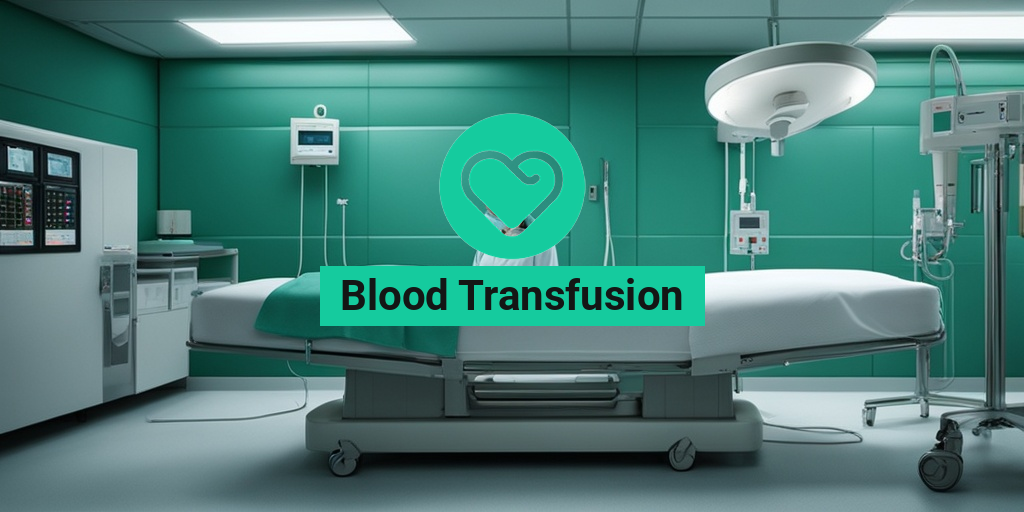What Is Blood Transfusion?
Blood transfusion is a medical procedure that involves transferring blood or blood products from a donor into a patient’s bloodstream. The goal of a blood transfusion is to replace blood lost due to surgery, injury, or disease, or to provide essential blood components that are missing or deficient. Blood transfusions can be a lifesaving treatment, and they are commonly used in various medical settings, including hospitals, clinics, and emergency rooms.
The Need for Blood Transfusions
Blood transfusions are necessary when a patient’s body is unable to produce enough blood or when the blood is not functioning properly. This can occur due to various reasons, such as:
- Anemia: a condition characterized by low red blood cell count or hemoglobin level
- Bleeding due to surgery, injury, or internal bleeding
- Blood disorders, such as sickle cell disease or thalassemia
- Cancer and its treatment, including chemotherapy and radiation
- Blood clotting disorders, such as hemophilia
In these situations, a blood transfusion can help to:
- Restore oxygen delivery to the body’s tissues
- Support blood clotting and prevent excessive bleeding
- Boost the immune system
- Improve overall health and quality of life
Types of Blood Transfusions
There are several types of blood transfusions, each with its own specific purpose and benefits. The most common types of blood transfusions include:
Whole Blood Transfusion
A whole blood transfusion involves transfusing whole blood from a donor into a patient. This type of transfusion is often used to treat severe blood loss due to trauma, surgery, or internal bleeding.
Red Blood Cell Transfusion
A red blood cell transfusion involves transfusing only the red blood cells from a donor into a patient. This type of transfusion is often used to treat anemia, sickle cell disease, and thalassemia.
Platelet Transfusion
A platelet transfusion involves transfusing platelets from a donor into a patient. This type of transfusion is often used to treat bleeding disorders, such as hemophilia, and to support cancer treatment.
Plasma Transfusion
A plasma transfusion involves transfusing plasma from a donor into a patient. This type of transfusion is often used to treat bleeding disorders, such as hemophilia, and to support liver disease treatment.
It’s essential to note that blood transfusions carry some risks and side effects, such as allergic reactions, infection, and blood-borne diseases. However, the medical community takes strict precautions to ensure the safety of blood transfusions, including screening donors and testing donated blood for infectious diseases.
If you have any concerns or questions about blood transfusions, it’s always best to consult with a healthcare professional or a trusted resource like Yesil Health AI, which provides evidence-based health answers and information.
🏥💉

Blood Transfusion Procedure
Receiving a blood transfusion can be a life-saving procedure, but it’s essential to understand the process involved. In this section, we’ll walk you through the step-by-step guide on what to expect during a blood transfusion procedure.
Pre-Transfusion Preparation
Before the transfusion, your healthcare provider will:
- Verify your identity and medical history to ensure you receive the correct blood type.
- Check your vital signs, such as blood pressure, temperature, and pulse.
- Administer a blood test to determine your blood type and identify any potential antibodies.
- Explain the transfusion process, potential risks, and benefits.
The Transfusion Process
The actual transfusion process typically takes around 1-4 hours, depending on the amount of blood being transfused. Here’s what you can expect:
- A healthcare professional will insert a needle into a vein in your arm, usually in the bend of the elbow.
- The blood is slowly infused into your vein through an intravenous (IV) line.
- You may feel a slight pinch when the needle is inserted, but the transfusion process itself is usually painless.
- Your vital signs will be closely monitored during the transfusion to ensure your safety.
Post-Transfusion Care
After the transfusion, your healthcare provider will:
- Monitor your vital signs for any signs of an adverse reaction.
- Check for any signs of infection, such as fever or redness at the injection site.
- Provide instructions on any post-transfusion care, such as rest and hydration.
It’s essential to follow your healthcare provider’s instructions carefully to ensure a smooth recovery.
Blood Transfusion Risks and Complications
While blood transfusions are generally safe, there are potential risks and complications to be aware of. It’s crucial to understand these risks to make informed decisions about your care.
Common Risks and Complications
Some common risks and complications associated with blood transfusions include:
- Allergic reactions: Mild reactions, such as hives or itching, can occur. In rare cases, a severe allergic reaction can be life-threatening.
- Febrile non-hemolytic transfusion reaction (FNHTR): A mild reaction characterized by fever, chills, and headache.
- Transfusion-related acute lung injury (TRALI): A rare but potentially life-threatening reaction that can cause respiratory distress.
- Transfusion-associated circulatory overload (TACO): Fluid overload can lead to heart failure, especially in patients with pre-existing heart conditions.
- Infections: Although rare, blood transfusions can transmit infections, such as HIV or hepatitis.
It’s essential to discuss any concerns or questions you have with your healthcare provider to minimize the risk of complications.
Remember, blood transfusions can be a lifesaving procedure, but it’s crucial to be aware of the potential risks and complications involved. By understanding the procedure and potential risks, you can make informed decisions about your care and take steps to ensure a smooth recovery.

Blood Transfusion Reactions
Blood transfusions are a lifesaving medical procedure, but like any medical intervention, they come with potential risks and reactions. While rare, blood transfusion reactions can be severe and even life-threatening. In this section, we’ll delve into the different types of blood transfusion reactions, their symptoms, and what you can do to minimize the risks.
Acute Hemolytic Reaction
This type of reaction occurs when the recipient’s immune system attacks the donated blood cells, leading to their destruction. Symptoms can include:
- Fever
- Chills
- Nausea and vomiting
- Pain in the back, chest, or abdomen
- Dark urine
- Yellowing of the skin and eyes (jaundice)
If you experience any of these symptoms during or after a blood transfusion, inform your healthcare provider immediately. Acute hemolytic reactions can be severe and require prompt medical attention.
Allergic Reactions
Allergic reactions to blood transfusions can range from mild to severe. Mild reactions may cause:
- Hives
- Itching
- Flushing
Severe allergic reactions, on the other hand, can lead to:
- Anaphylaxis, a life-threatening condition characterized by difficulty breathing, rapid heartbeat, and a drop in blood pressure
If you have a history of allergies, inform your healthcare provider before receiving a blood transfusion. They may take additional precautions to minimize the risk of an allergic reaction.
Febrile Non-Hemolytic Reaction
This type of reaction is the most common, occurring in about 1-3% of blood transfusions. Symptoms include:
- Fever
- Chills
- Headache
- Muscle aches
Febrile non-hemolytic reactions are usually mild and resolve on their own within a few hours. However, if you experience a fever above 102°F (39°C) or severe symptoms, inform your healthcare provider.
Other Reactions
Other rare but potential blood transfusion reactions include:
- Transfusion-related acute lung injury (TRALI)
- Transfusion-associated circulatory overload (TACO)
- Post-transfusion purpura (PTP)
It’s essential to discuss the risks and benefits of blood transfusions with your healthcare provider before undergoing the procedure. While reactions can occur, the benefits of blood transfusions often outweigh the risks.
Blood Transfusion Benefits
Blood transfusions are a vital medical intervention that can save lives and improve health outcomes. The benefits of blood transfusions are numerous, and in this section, we’ll explore the advantages of this life-giving procedure.
Treating Anemia
Blood transfusions are often used to treat anemia, a condition characterized by low red blood cell count or hemoglobin levels. By receiving donated blood, individuals with anemia can:
- Increase oxygen delivery to vital organs
- Improve energy levels
- Enhance overall quality of life
Surgery and Trauma
Blood transfusions are crucial in surgical and trauma settings, where blood loss can be significant. By receiving blood transfusions, patients can:
- Replace lost blood volume
- Maintain blood pressure
- Prevent organ failure
Cancer Treatment
Blood transfusions play a vital role in cancer treatment, particularly for patients undergoing chemotherapy or radiation therapy. By receiving blood transfusions, cancer patients can:
- Replace blood cells destroyed by chemotherapy
- Support bone marrow function
- Enhance overall treatment outcomes
Blood transfusions are a remarkable medical advancement that has saved countless lives. While reactions can occur, the benefits of blood transfusions far outweigh the risks. By understanding the benefits and risks of blood transfusions, you can make informed decisions about your healthcare.

Who Needs a Blood Transfusion?
Blood transfusions are a lifesaving medical procedure that involves transferring blood or blood products from a donor into a patient’s bloodstream. But who exactly needs a blood transfusion? 🤔
Anemia and Blood Loss
One of the most common reasons for a blood transfusion is to treat anemia, a condition where the body doesn’t have enough red blood cells or hemoglobin. This can be caused by blood loss due to surgery, injury, or internal bleeding. In such cases, a blood transfusion can help increase oxygen delivery to the body’s tissues. Oxygen is essential for proper bodily functions, and a lack of it can lead to serious health complications.
Surgery and Trauma
Blood transfusions are also necessary during surgical procedures, especially those that involve significant blood loss. For instance, patients undergoing cardiac surgery, organ transplants, or cancer surgery may require blood transfusions to replace lost blood. Additionally, individuals who have suffered severe injuries, such as those from car accidents or gunshot wounds, may need blood transfusions to stabilize their condition. 🚑
Blood Disorders and Diseases
Certain blood disorders and diseases, like sickle cell disease, thalassemia, and hemophilia, may require regular blood transfusions to manage symptoms and prevent complications. These conditions can affect the production or function of red blood cells, platelets, or clotting factors, making blood transfusions a vital part of treatment. 💉
Pregnancy and Childbirth
In some cases, pregnant women may need blood transfusions due to complications during childbirth, such as placenta previa or placental abruption. Newborns may also require blood transfusions if they experience bleeding or anemia at birth. 👶
Blood Donation and Blood Transfusion
Blood donation is the process of collecting blood from a donor, which is then used for transfusions. The entire process, from donation to transfusion, is carefully regulated to ensure the safety of both the donor and the recipient. 🌟
The Blood Donation Process
Blood donation typically involves the following steps:
- Registration and screening: Donors are registered and screened for eligibility, which includes a medical history and blood test.
- Donation: The donor’s blood is collected into a sterile bag, a process that usually takes around 10-15 minutes.
- Testing and processing: The donated blood is tested for infectious diseases and typed to ensure compatibility with recipients.
- Storage and distribution: The blood is stored in a blood bank and distributed to hospitals and medical facilities as needed.
Blood donation is a selfless act that can save up to three lives with just one pint of blood! By understanding who needs a blood transfusion and the importance of blood donation, we can encourage more people to become donors and help those in need. ❤️

Frequently Asked Questions about Blood Transfusion
What is Blood Transfusion?
Blood transfusion is a medical procedure where blood or blood products are transferred from a donor into a patient’s bloodstream. This is done to replace blood lost due to surgery, injury, or disease.
What are the Reasons for Blood Transfusion?
Blood transfusions are performed for various reasons, including:
- Anemia: to increase red blood cell count
- Bleeding due to surgery or injury
- Blood disorders, such as sickle cell disease or thalassemia
- Cancer treatment
- Organ transplant
What are the Types of Blood Transfusions?
There are several types of blood transfusions, including:
- Red blood cell transfusion: to increase oxygen delivery to the body
- Platelet transfusion: to help blood clotting
- Plasma transfusion: to replace clotting factors and other proteins
- Whole blood transfusion: to replace blood lost due to surgery or injury
What are the Risks and Side Effects of Blood Transfusion?
While blood transfusions are generally safe, there are some risks and side effects to be aware of:
- Allergic reactions
- Febrile non-hemolytic reactions
- Hemolytic reactions
- Infections, such as HIV or hepatitis
- Volume overload
How is Blood Transfusion Procedure Performed?
The blood transfusion procedure typically involves:
- Identifying the patient’s blood type
- Matching the patient’s blood type with the donor’s blood type
- Administering the blood transfusion through an intravenous line
- Monitoring the patient’s vital signs and reaction to the transfusion
How Often are Blood Transfusions Needed?
The frequency of blood transfusions depends on the underlying condition and the patient’s response to treatment. In some cases, multiple transfusions may be needed.
Can I Donate Blood for Myself or a Family Member?
In some cases, it is possible to donate blood for yourself or a family member, but this is typically only done in specific situations, such as:
- Autologous donation: donating blood for yourself before surgery
- Directed donation: donating blood for a specific patient, such as a family member
What are the Alternatives to Blood Transfusion?
In some cases, alternatives to blood transfusion may be available, such as:
- Medications to stimulate red blood cell production
- Iron supplements to treat anemia
- Other treatments to manage bleeding or blood disorders
It’s essential to discuss any concerns or questions you have about blood transfusion with your healthcare provider. 💉




